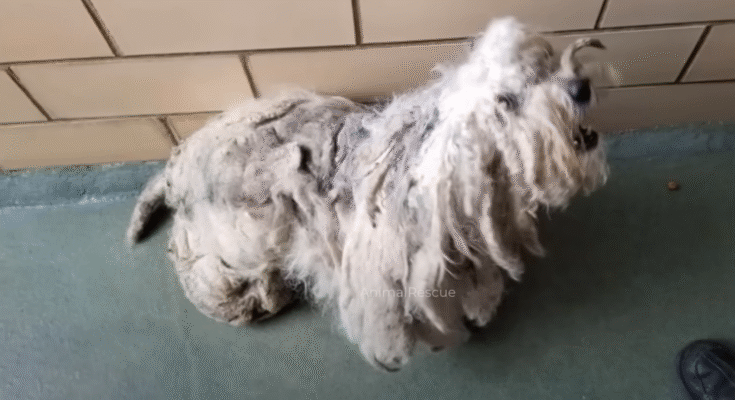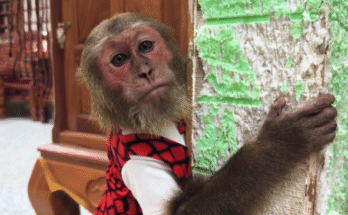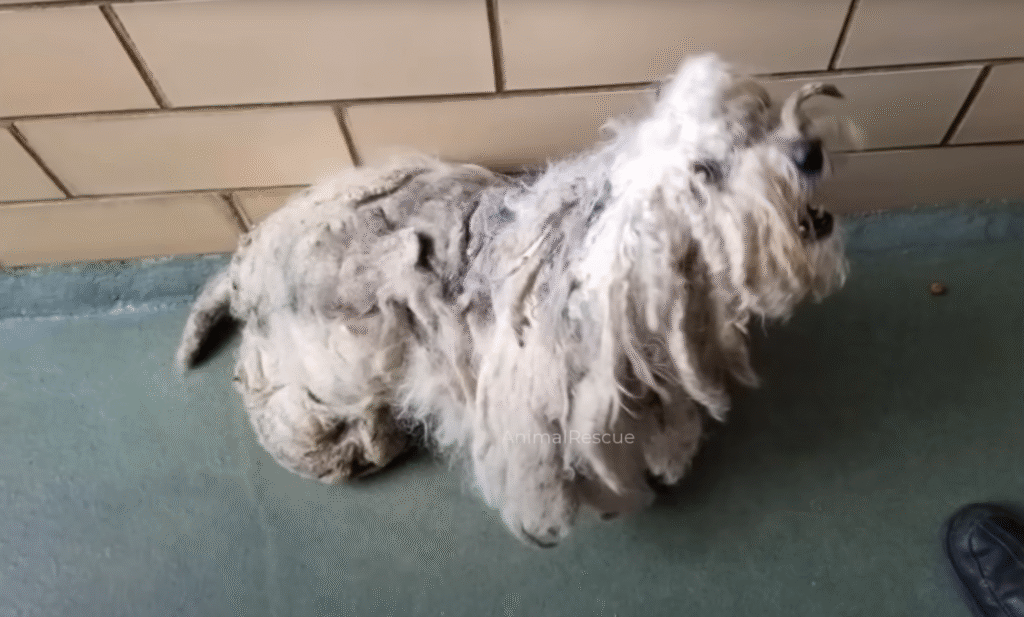
It was one of those sweltering afternoons when the sun seemed determined to test endurance, not just of humans, but of every living creature. The streets were unusually quiet, save for the occasional hum of a distant car or the chatter of birds overhead. I had been walking the neighborhood, checking for animals in need, when I noticed a strange, dark shape lurking beneath a dense bush near the edge of the park. At first, I thought it was just a discarded bundle of trash, but as I drew closer, the shape shifted.
There, cowering in the shade, was a dog — or rather, a shadow of what a dog should have been. He was small, perhaps young, though it was hard to tell beneath layers of matted, filthy fur that clung to his frame in grotesque clumps. Dirt and grime coated him like a second skin, and his body trembled violently with every noise, every movement, every step I took closer. His eyes peeked through tangled hair, wide with terror, reflecting a profound mistrust of everything around him.
I froze for a moment, unsure how to approach. His fear was palpable, almost physical, radiating from him like heat. He flinched at every sound — the rustle of leaves, the distant bark of another dog, even my own breathing. It was clear he had learned, over time, that the world was not kind. That each movement, each person, each hand that reached toward him might bring pain instead of comfort.
Slowly, I sat on the grass a few feet away, careful not to make sudden movements. “Hey there,” I whispered softly, letting my voice carry calm rather than command. “I’m not going to hurt you. It’s okay. You’re safe now.”
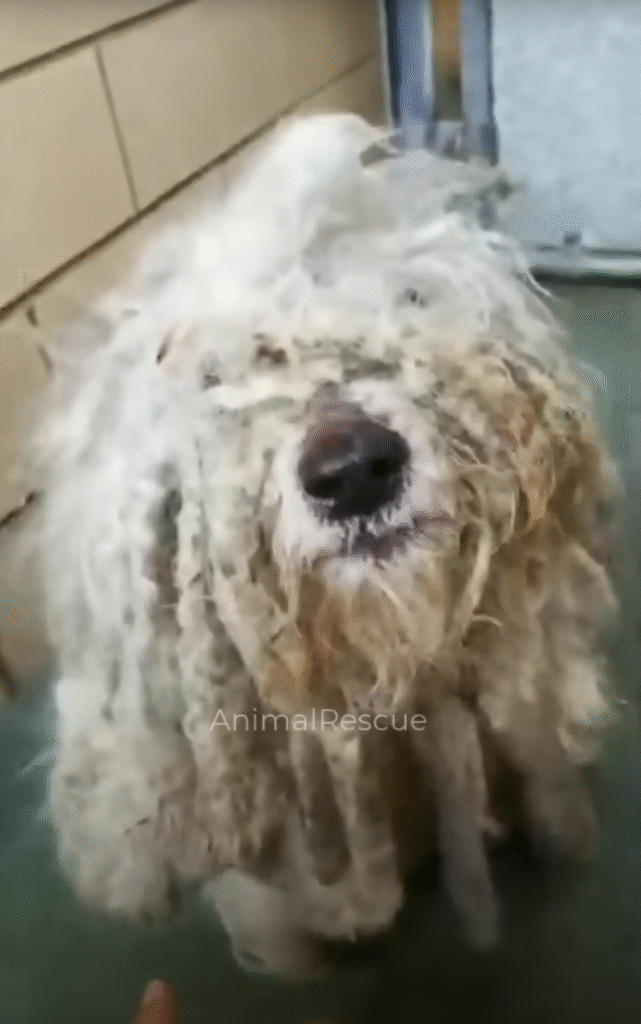
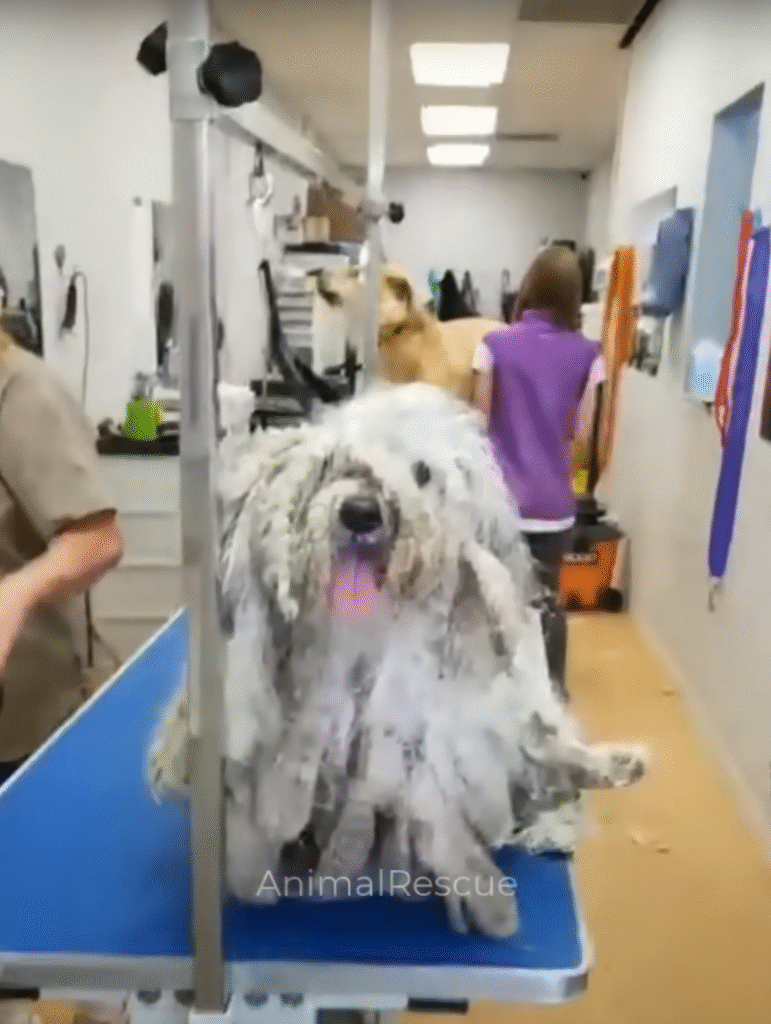
For several long minutes, he did nothing but watch me. Each second felt like an eternity. He shivered, body coiled as though prepared to flee or defend, and yet he did not run. The bush shielded him, gave him a false sense of security, and I realized he had made this hiding spot a refuge against a world that had hurt him.
I slowly extended a hand, palm down this time, just allowing him to sniff the air near me. His nose twitched, the tip barely brushing my fingers before he recoiled again. His trust had been fractured long ago, and rebuilding it would require patience, gentleness, and above all, time.
After a while, I produced a small piece of dry bread I had in my bag. I laid it on the ground in front of me, far enough that he could approach without feeling cornered. His nose twitched, eyes wide and alert. Tentatively, he crept out from under the bush, pawing cautiously toward the morsel. When he finally took it, his teeth barely grazed it in a quick, desperate motion, and then he bolted back under the bush, as if to protect himself from imagined threats.
This was the beginning of what would be a long and delicate rescue. He was clearly malnourished, underweight, and his matted fur was so severe that it had formed clumps so tight they were likely causing pain and restricting his movement. Some patches of skin beneath the mats were raw, irritated, and infected — silent screams of neglect. It was, without doubt, the worst case of matted fur I had ever encountered.
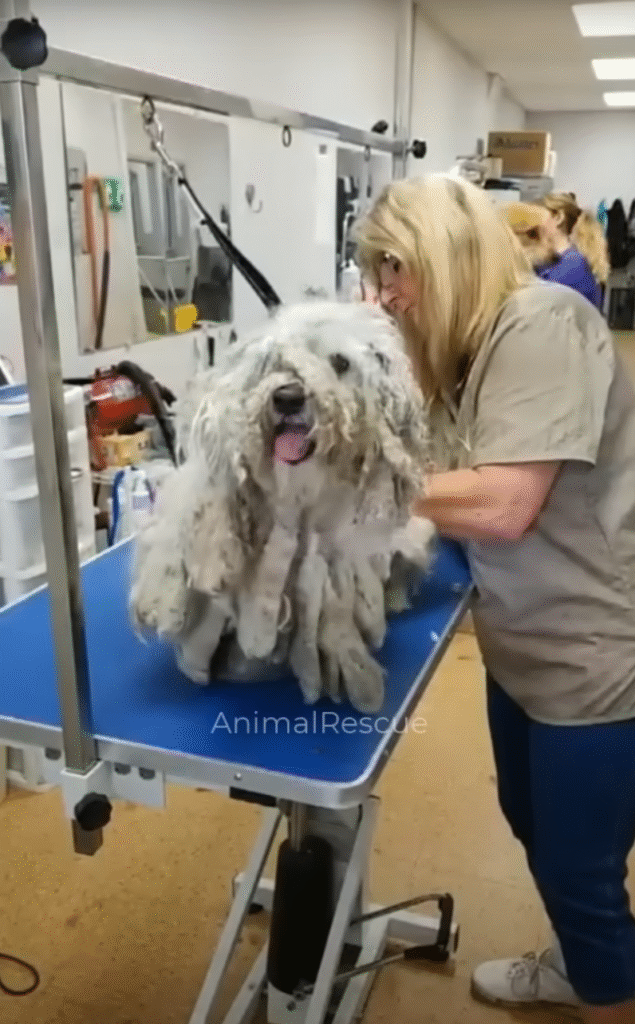
Over the next hour, I worked slowly, speaking softly and moving as little as possible. I brought more food, set up a bowl of fresh water, and gave him space to eat and drink on his own terms. Each time he ventured out to take a bite, I allowed him to retreat afterward. Building trust, I realized, was the first step before any grooming or medical care could even begin.
By evening, he was still wary, but he had eaten more steadily and had allowed me to sit a little closer. I named him “Shadow,” for his quiet, cautious nature and the way he seemed to exist almost unseen in the world, hiding from everyone and everything. It was a name that fit his story — lost, frightened, and neglected — yet still holding onto life in the smallest of forms.
The following days were a slow, painstaking journey. Shadow allowed me to gently touch him, and I began the delicate process of grooming. Each clump of matted fur had to be carefully loosened, sometimes cut away when combing was impossible. He flinched at first, yelped occasionally, and tried to escape, but over time, he began to trust that I would not harm him. Every strand of fur removed revealed not just the scars of neglect, but also the form of a dog who, underneath it all, had a strong, healthy body longing to move freely.
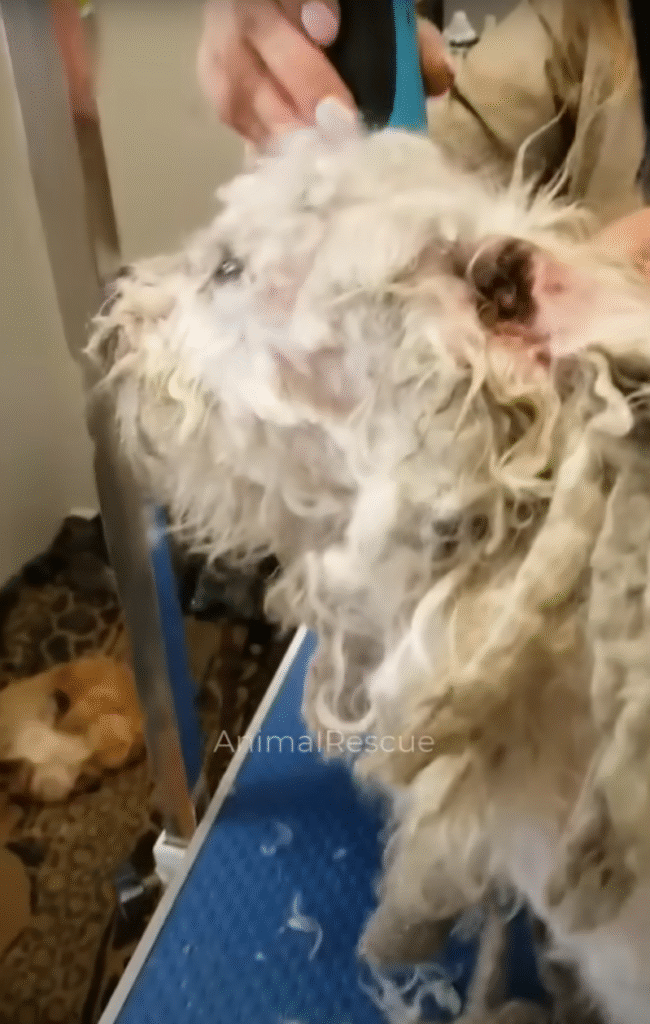
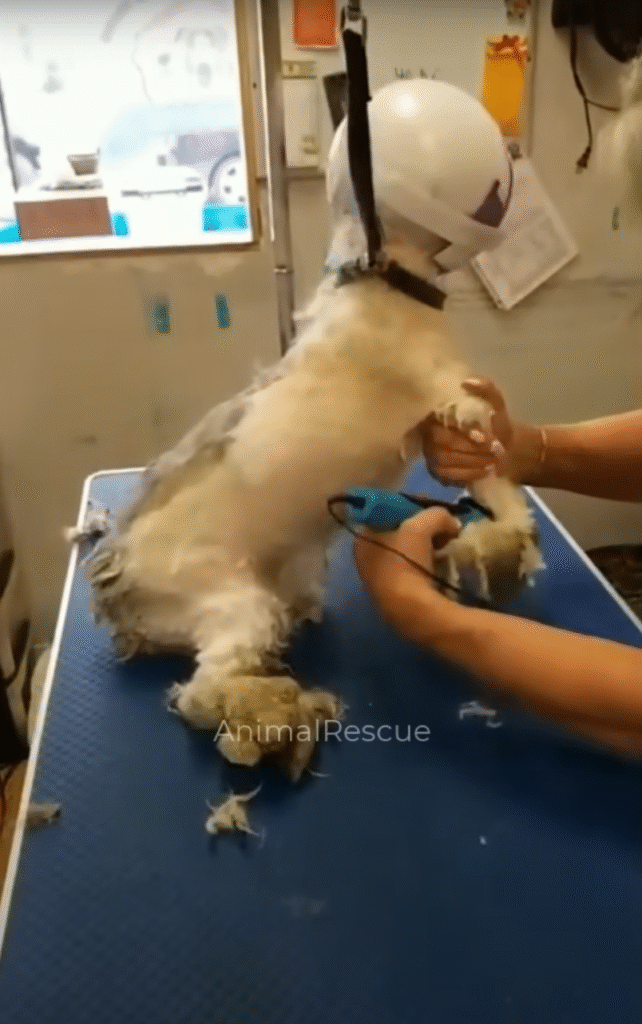
Medical attention was critical. Shadow had flea infestations, small infections, and likely a host of other issues that required professional care. The vet treated his wounds, administered vaccinations, and provided medicine to help him recover physically. But it was the emotional healing — the slow, patient reassurance that humans could be kind — that took the most effort.
Shadow began to show signs of his true personality only after weeks of gentle care. The first time he wagged his tail, it was hesitant, small, almost apologetic. The first time he ran freely in the yard without fear, ears flopping and tongue out, it was pure joy. He learned to play with toys, to chase balls, and to seek affection instead of recoiling from it. His once filthy, matted coat became soft and shiny, revealing a dog who had been strong all along, merely hidden beneath layers of suffering.
The transformation was nothing short of miraculous. Shadow, who had been found dirty, scared of everyone and everything, had grown into a confident, playful, and loving companion. His eyes, once filled with terror, now sparkled with curiosity and joy. The once-unapproachable dog beneath the bush became a friend to everyone he met, proving that love, patience, and care could heal wounds that seemed insurmountable.
Shadow’s journey reminded me, as so many rescue stories do, that neglect leaves deep scars — both visible and invisible — but it cannot extinguish the capacity for trust and love. Dogs, like humans, carry resilience within them, waiting for someone to give them the chance to heal. The worst case of matted fur, the trembling, scared dog hiding beneath a bush, was transformed into a living testament to hope, patience, and the power of compassion.
By the time Shadow was ready for adoption, he had blossomed into a beautiful, healthy, and affectionate dog. His new family marveled at the change, often asking how a dog could go from such fear and neglect to such trust and joy. The answer, though simple, is profound: it took patience, understanding, and unwavering care. Shadow’s story is a reminder that no matter how dire the circumstances, transformation is possible when love — even slow, careful love — is allowed to take root.
Today, Shadow runs freely, plays with delight, and enjoys the warmth of a home that he never thought possible. But I will never forget the day I first saw him under that bush, small and trembling, hidden from a world that had been unkind. He taught me that resilience is quiet but powerful, that trust can be rebuilt with patience, and that even the most neglected creatures can find joy again when given a chance.
In the end, the worst case of matted fur became a story of hope and transformation — a living proof that love, kindness, and determination can heal even the most broken of beginnings. Shadow, once terrified of everyone and everything, now embodies the very essence of survival, trust, and the boundless capacity of the heart to heal.
